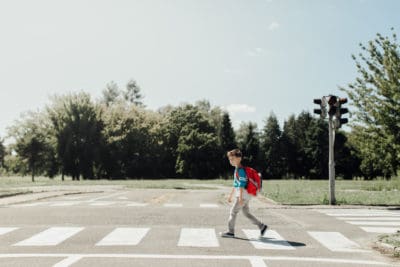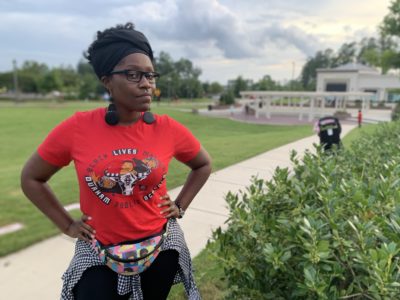

It is November 2020, and COVID-19 has forced many public school students online. We are a Zoom school nation. But not everyone is zooming. The word “zoom” implies movement, going someplace, or elevation. “Zoom” is the sound I make with my children when I am flying an imaginary airplane.
But significant numbers of students have had challenges connecting to their virtual classrooms. Our students should be zooming. But instead, many are losing. Today, almost 17 million school-age students do not have access to high-speed home internet.
One-third of Hispanic and African American households do not have access to high-speed internet at home, and 17% of Hispanic and African American households do not have a computer. There is a practical fix to this. Public school systems could provide each student with a computer or tablet. Internet providers could expand their low-cost and no-cost internet offerings.
The divide that persists
In 2000, only 23% of African Americans and 23% of Hispanics had computers in their homes. Two decades later, the digital divide persists. COVID-19 did not cause this problem. COVID-19 is simply reminding us how bad it is.
This divide is a stain on public school education. Inaccessibility continues to undermine educational efforts in urban and rural school communities alike. Equipping students with computers and internet access is not a gratuitous ask. It is essential.
COVID-19 is exposing digital inequities. Pick a name — the achievement gap, opportunity gap, homework gap, school disparity gap — it is alive and well. COVID-19 is making it worse. Someone coined the term “COVID slide” to refer to academic losses that might befall students during this time. As educators, we need to prepare for the academic COVID avalanche on the way.
School systems are trying
In the largest school district in North Carolina, Wake County, where I live, administrators are working hard to equip students and families with computers and internet hotspots. As of Nov. 2, Wake County Public School system has provided 76,680 Chromebooks and more than 15,000 hotspots to students and families with an additional 2,500 hotspots in the process of being delivered. Wake is not alone in their effort.
What about smartphones?
Everyone has a smartphone these days. But doing homework on a smartphone is difficult, and for a kindergartener, close to impossible. I should know — I have two, and navigating from Zoom classroom, to Zoom classroom, SeeSaw, to Youtube, to RazKids is difficult even on a computer. Cell phones cannot replace computers. We owe every kid access to a quality education. Furnishing a computer to every student is one small step in that direction.
Level the playing field
There is a practical fix to this. Public schools could provide each student with a tablet, or a computer and a hot spot if needed.
Even before the pandemic, some school districts across the country had started providing a laptop or tablet to every student. This is an idea we should replicate across the board, especially for low-income students. We could start by providing students participating in free- or reduced-price school meals with computers. We could make a big dent in the digital divide with just this move.
Income level should not determine a student’s ability to access their virtual classroom. Income should not determine a students’ ability to learn during COVID-19. The digital divide is like the racial achievement gap that has been around for decades. We know educational funding is correlated with academic outcomes. That is why interrupting the digital gap is important.
But we have been here before
Before federal school meals programs, many kids came to school hungry and food insecure (some still do). Kids cannot learn if their stomachs are empty. As a country, we did something about it. In 2018, 4.8 million meals were served through the National School Lunch Program.
This problem was addressed on a federal level, and free and reduced-price lunch programs are in place to provide meals to millions of students in public schools nationwide. Even during COVID-19, schools have been providing millions of meals each week.
Just as students cannot learn on an empty stomach, students cannot learn in virtual classrooms without a connected tablet or computer.
Not just the Brown and Black kids
Be not deceived. The divide is not exclusively a Brown and Black student issue. The digital divide impacts white students in urban and rural communities alike. Rural Americans have been called the “forgotten minority.” Appalachia has some of the most poverty in the country and some of the poorest internet connectivity. We have a real, urgent, and important national issue that requires a national response. The playing field is not level, and students are not starting on equal footing.
Knowledge is nourishment
Students are entitled to a free public education, but some are not receiving that. Providing a student with a computer will not solve every ill that plagues public school education. However, it is a start.
Students are not receiving equitable academic experiences during COVID-19. Families with resources are advantaged over those without. If we are serious about educating children and closing gaps in educational attainment, we must equip students with the tools to do the work.
Spread the word and donate your old computers
Many cable companies such as AT&T, TimeWarner, or Spectrum (check your local internet providers) have income-based or low-income internet options, some as low as $10 a month. But not all families are aware of these options.
In North Carolina, there are wonderful nonprofits dedicated to refurbishing and providing low or no-cost computers to those in need. Two such organizations are Kramden Institute Inc and E2D. To date, E2D has provided 13,000 laptops and Kramden Institute has provided almost 40,000 computers. Spread the word. Donate. Get involved.




